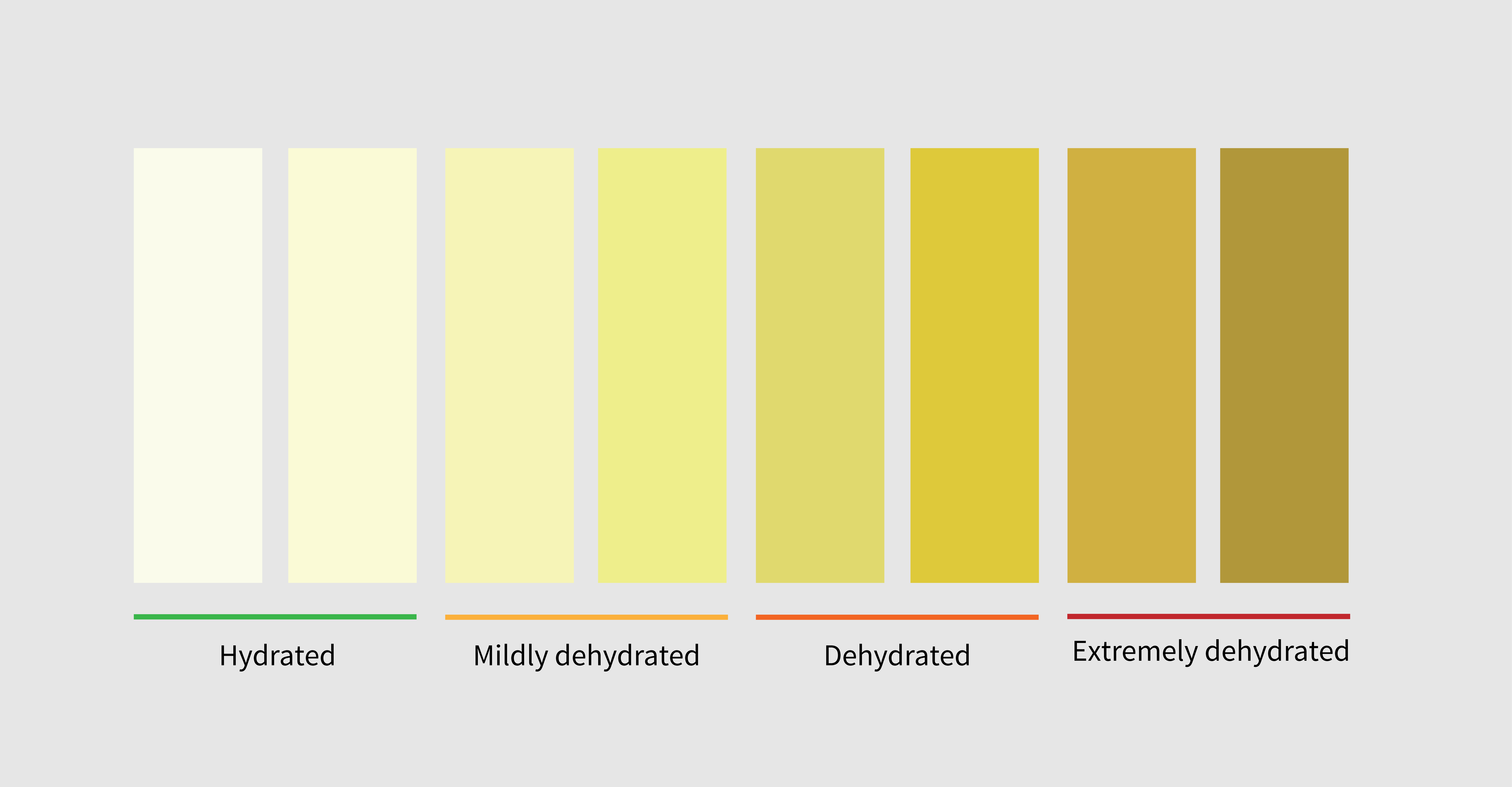Generally speaking, 3-4 liters of water per day (roughly 0.75-1 gallons) should be sufficient for most people to stay properly hydrated.
The daily recommended intake is 2.7 liters for healthy women and 3.7 liters for healthy men, but optimal intake is inherently affected by age, activity level, pregnancy, lactation, environment, and more. For many people, using thirst alone to dictate fluid intake can lead to somewhat insufficient hydration status.
Fortunately, there are other easy ways to keep an eye on your hydration status. Urine color is actually a pretty useful and very practical guide for hydration status. Urine should be pale and odorless; if it starts getting darker or smelling more strongly, that’s usually indicative of some degree of dehydration. Body weight can also be a helpful indicator; if you’re effectively replacing lost fluids, you shouldn’t see large changes in body weight over the course of a workout.

Urine color is commonly used as a practical but imprecise method to guide hydration monitoring.
Most people get about 20-30% of their daily water intake from the water that is present in their food, with the other 70-80% coming from beverages. Ultimately, it doesn’t matter if your water is coming from food or drinks; water is water. While it's generally pretty easy to keep a running total of your beverage intake throughout the day, MacroFactor facilitates fluid monitoring by tracking the water content of the foods you consume as well!
It’s also important to keep electrolytes (such as sodium, potassium, and chloride) balanced.
For most people on a healthy diet, there’s no need to deliberately seek out particular electrolytes or carefully manage their relative intakes. Issues related to electrolyte balance are typically observed only in circumstances where atypical dietary strategies lead to insufficient electrolyte intakes, extreme sweat loss leads to an atypical degree of electrolyte depletion, or extreme restriction or overconsumption of water dramatically alters fluid and electrolyte balance.
If your hydration needs are more nuanced than the typical person due to extreme training demands, harsh environmental conditions, or unique medical circumstances, be sure to seek guidance from a qualified medical professional.
Even if your hydration needs are pretty simple and straightforward, keeping an eye on fluid intake and hydration status can have additional benefits if you have specific goals related to body weight.
Due to changes in total body water, your scale weight can easily fluctuate by a few pounds in either direction (with larger fluctuations for larger people) in the absence of any particularly extreme perturbations.
A really high-sodium dinner can cause a transient elevation in body weight, whereas a period of unusually low carbohydrate intake can cause a notable drop in body weight that will rebound whenever carbs are reintroduced.
If you aren't mindful of fluid replacement, body weight can drop by a few pounds over the course of a hard workout in the heat, and we even weigh less in the morning than the evening due to the absence of overnight food and beverage intake. As a result, it’s critical to consider transient fluctuations in sodium intake, carb intake, and hydration status whenever monitoring body weight changes over time.
Fortunately, MacroFactor was carefully designed to react appropriately in response to transient fluctuations in body water. This allows MacroFactor to keep you on track and prevent you from getting derailed by day-to-day fluctuations in water weight.
Now that you’ve learned about how much water you should drink, you might enjoy one of these articles next:
Pin Nutrients to the Dashboard